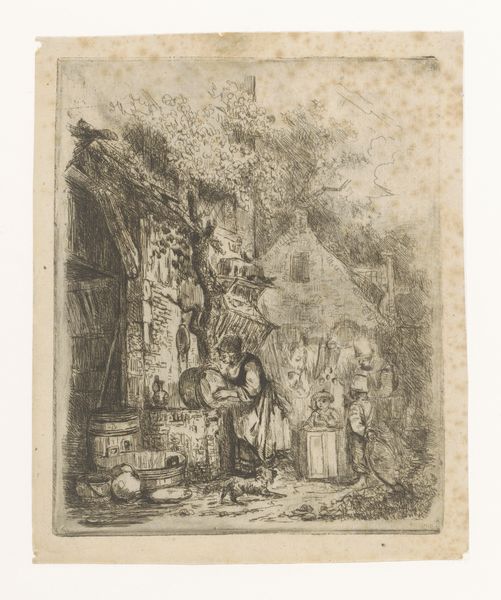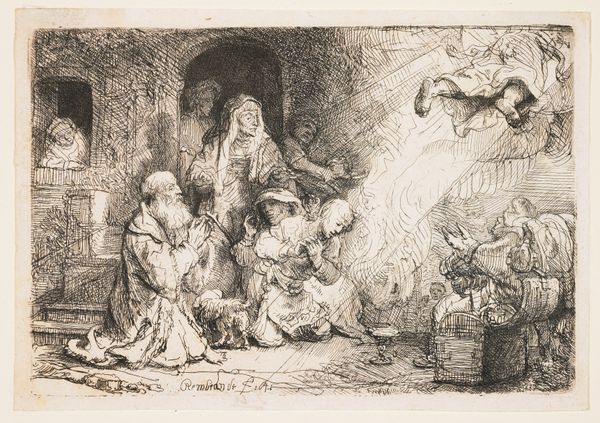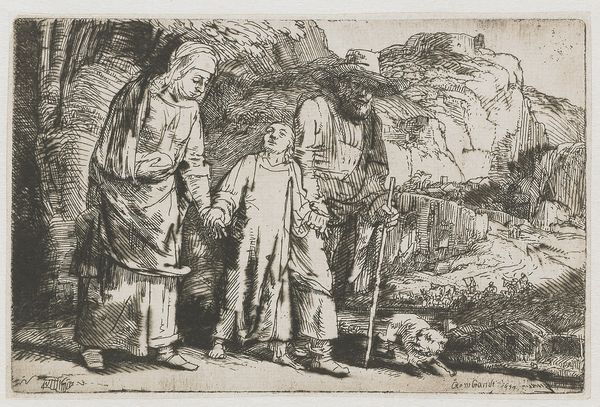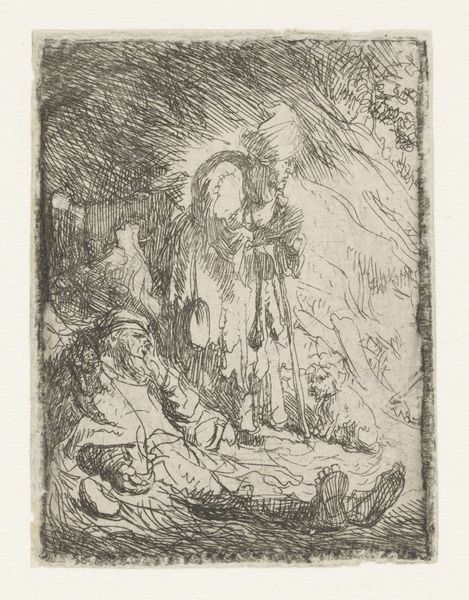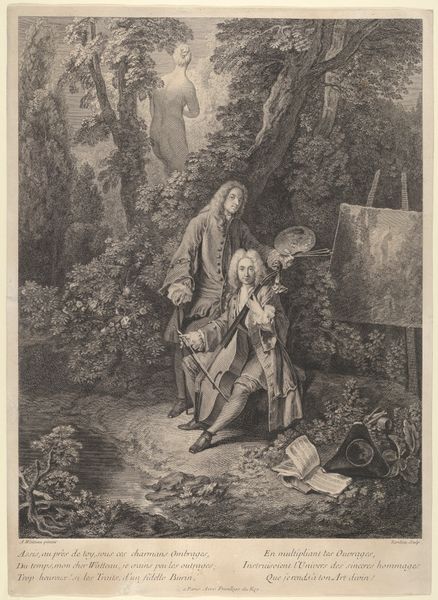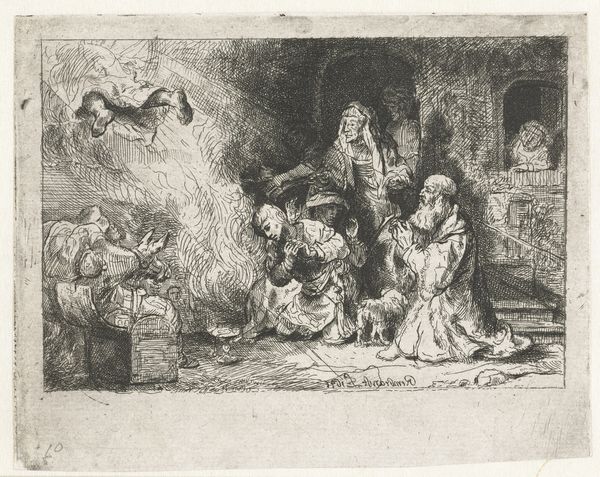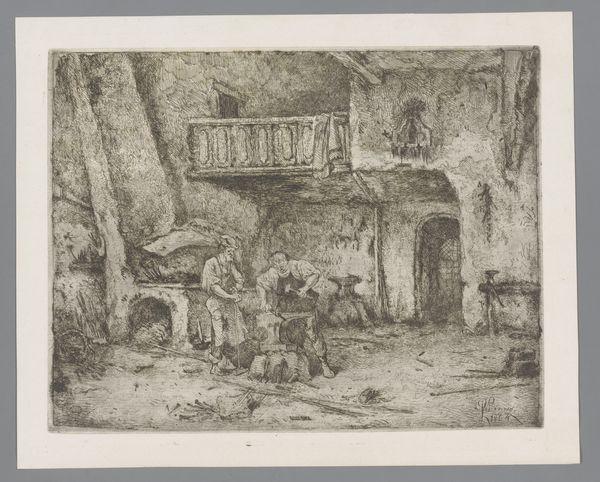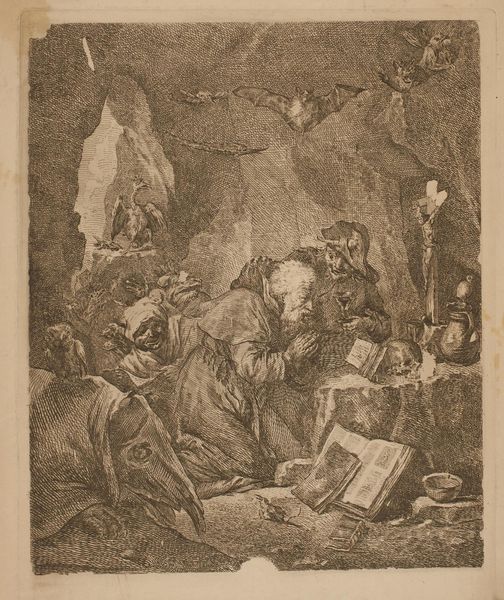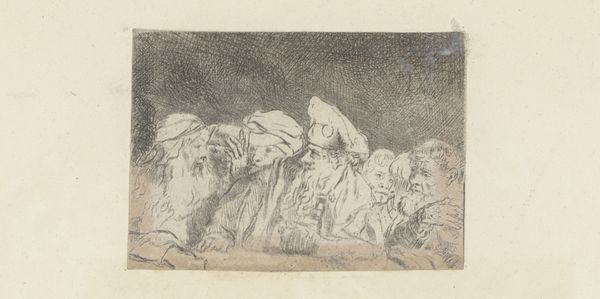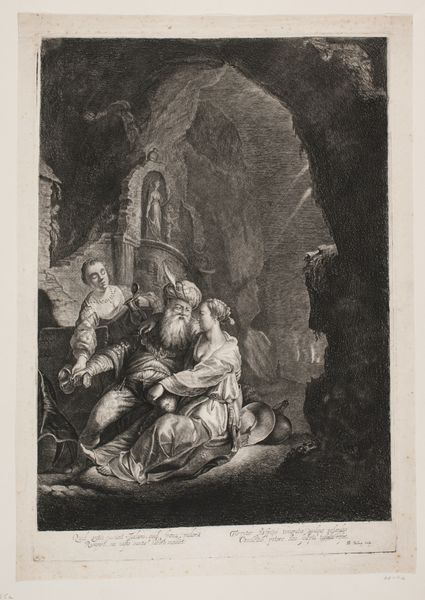
print, etching
#
baroque
# print
#
etching
#
landscape
#
figuration
#
history-painting
Dimensions: height 93 mm, width 144 mm
Copyright: Rijks Museum: Open Domain
Editor: Here we have Rembrandt van Rijn’s "Flight into Egypt: Crossing a Brook," an etching dating from around 1654-1808. It feels quite intimate despite depicting a historical scene, almost like a candid snapshot. What do you see in this piece that I might be missing? Curator: Well, immediately the landscape itself whispers stories. Look at how the trees loom, almost protective, yet casting long shadows. The brook becomes more than just water, doesn’t it? It’s a barrier, a passage, echoing the larger journey and the family’s vulnerable state. The landscape seems to echo their emotional landscape. Editor: That’s a great point! I hadn’t thought about the emotional impact of the natural elements so literally. The way they huddle close together does add a layer of meaning to their action of ‘crossing’. Is Rembrandt trying to tell us something about displacement or the refuge within nature? Curator: Displacement, certainly. But also consider the continuity of symbols. The donkey, a beast of burden, transformed into a sacred vessel carrying hope. Mary, a universal symbol of motherhood. And Joseph, a figure of quiet strength. Notice also that the etching medium, so readily reproducible, democratizes a biblical scene. Editor: So it’s less about individual interpretation and more about shared understanding and recognition? Curator: Not necessarily! Consider your initial reaction. That 'intimate snapshot' feeling arises, in part, from Rembrandt humanizing the divine. What does it say about us that we find comfort and connection within that seemingly familiar and personal scale of seeing and understanding the scene, rather than divine grand narrative? Editor: It's like a personal connection to this story. Thanks, seeing these universal connections makes me see so much more in this artwork. Curator: And for me, thinking about your perspective brings new meanings to light!
Comments
No comments
Be the first to comment and join the conversation on the ultimate creative platform.

